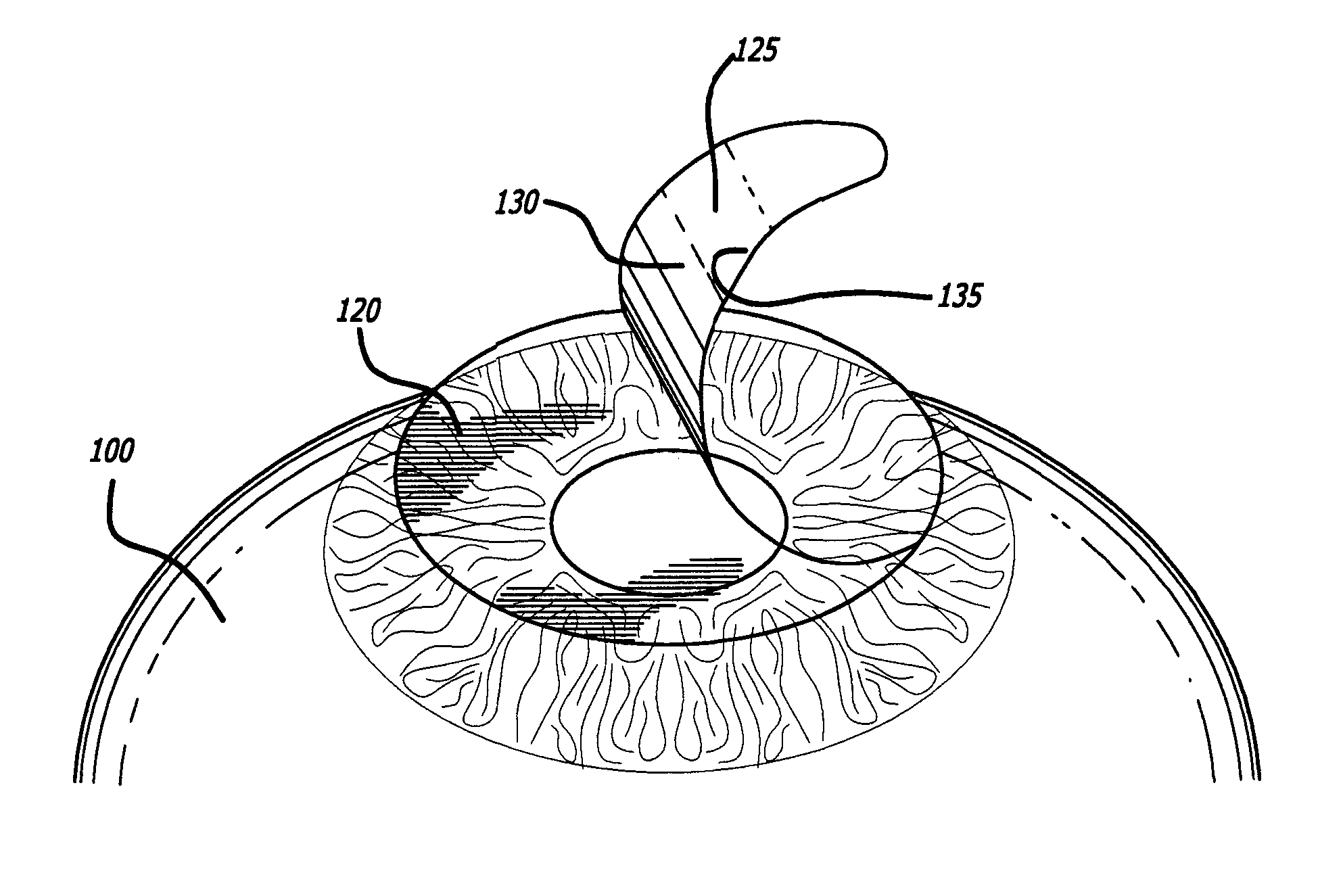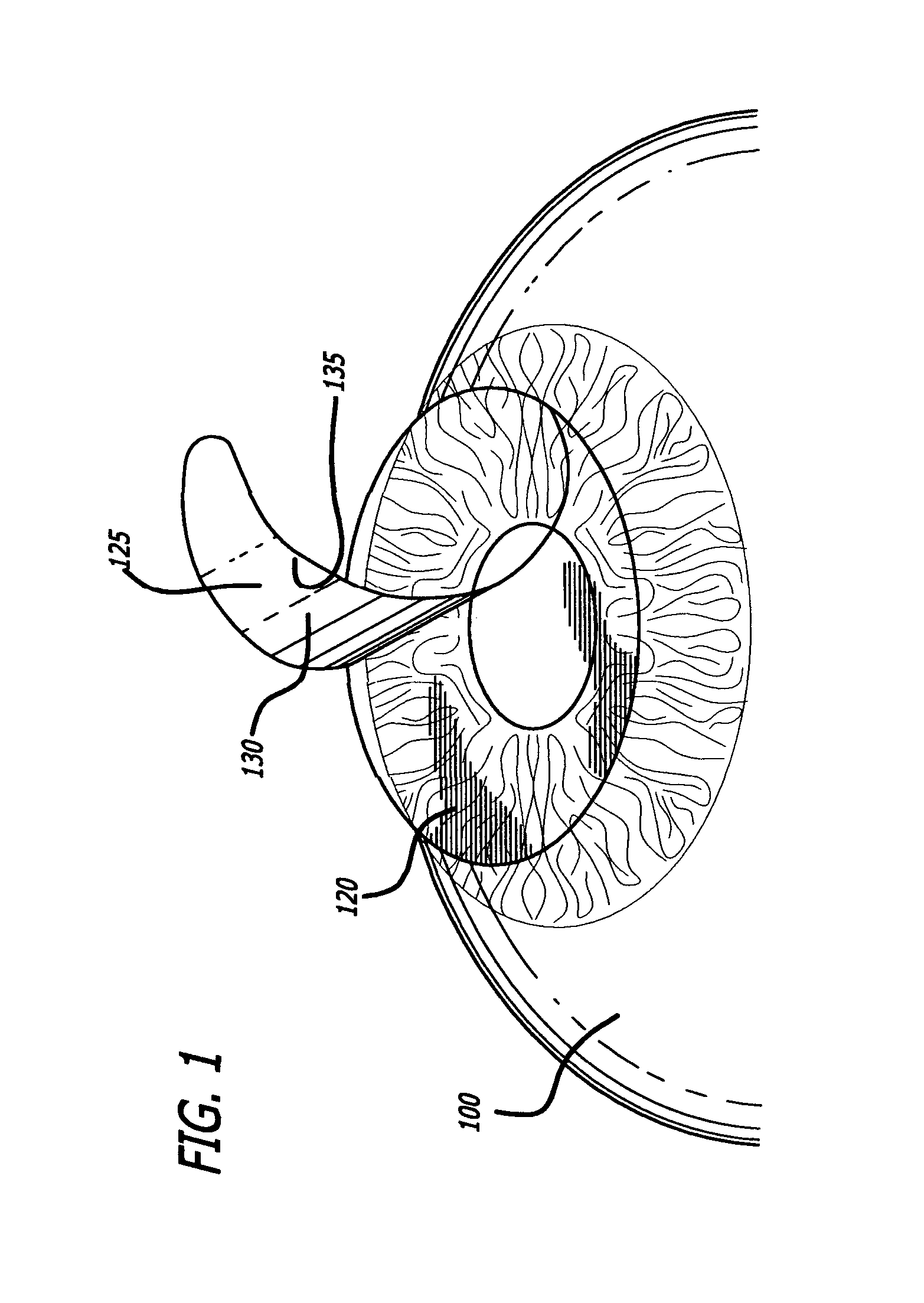Method of correcting vision problems using only a photodisruption laser
a technology of photodisruption and laser, which is applied in the field of improvement over lamellar laser refractive surgery, can solve the problems of perceived risks and discomfort of laser procedures, candidates are either unaware or undeterred, and achieve the effect of reducing fears
- Summary
- Abstract
- Description
- Claims
- Application Information
AI Technical Summary
Benefits of technology
Problems solved by technology
Method used
Image
Examples
Embodiment Construction
[0023]C-CLEAR™ is based on the nature of the corneal stroma and its reaction to being transected. The stroma is composed of about 200 flattened lamellae (plates of collagen fibrils), superimposed one on another. Each is about 1.5-2.5 micrometers thick. The fibers of each lamella are parallel with one another, but at right angles to those of adjacent lamellae. These lamellae are made up of bundles of modified connective tissue, the fibers of which are directly continuous with those of the sclera. Fibers of the layers frequently interweave. The collagen fibrils run at different angles between points on the corneal limbus, the border of the cornea, and the sclera.
[0024]FIG. 1 depicts an eye 100 with a cornea 120 from which a corneal flap 125 has been formed and folded back. The flap has a center 130 and an edge or periphery 135. Let Δt be the difference in flap thickness between the flap center 130 and the flap edge 135. Expressed algebraically, Δt=tperiphery−tcenter. In current LASIK ...
PUM
 Login to View More
Login to View More Abstract
Description
Claims
Application Information
 Login to View More
Login to View More - R&D
- Intellectual Property
- Life Sciences
- Materials
- Tech Scout
- Unparalleled Data Quality
- Higher Quality Content
- 60% Fewer Hallucinations
Browse by: Latest US Patents, China's latest patents, Technical Efficacy Thesaurus, Application Domain, Technology Topic, Popular Technical Reports.
© 2025 PatSnap. All rights reserved.Legal|Privacy policy|Modern Slavery Act Transparency Statement|Sitemap|About US| Contact US: help@patsnap.com



